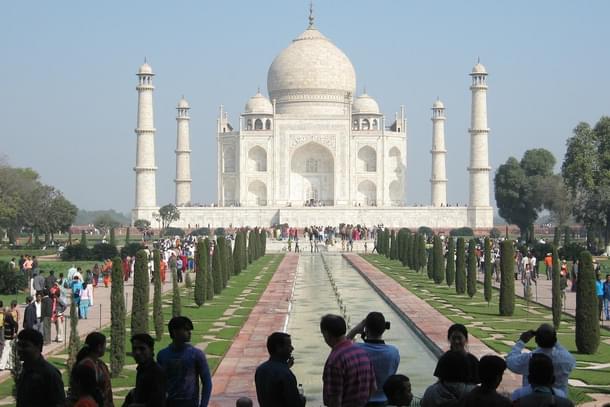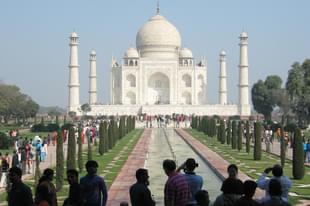News Headlines
'Taj Mahal Not Built By Shah Jahan, But Raja Man Singh' Claiming PIL Dismissed By Delhi HC, ASI Asked To Consider
Nishtha Anushree
Nov 03, 2023, 05:29 PM | Updated 05:29 PM IST
Save & read from anywhere!
Bookmark stories for easy access on any device or the Swarajya app.


The Delhi High Court instructed the Archaeological Survey of India (ASI) on Friday (3 November) to review the representation submitted by an organisation called Hindu Sena, which is seeking directions to accurately document the history of the Taj Mahal.
A panel comprising Chief Justice Satish Chandra Sharma and Justice Tushar Rao Gedela dismissed a Public Interest Litigation (PIL) that contended the Taj Mahal's construction was not the work of Mughal Emperor Shah Jahan but rather Raja Man Singh.
The panel noted that the petitioner had previously filed a petition with similar requests in the Supreme Court, and the apex court had advised the organisation to present its case to the ASI, Bar and Bench reported.
The Delhi High Court was informed that the ASI had not yet made a decision on the representation. Consequently, the panel urged the ASI to consider the representation.
Hindu Sena President Surjit Singh Yadav's petition claimed that the Taj Mahal was originally the palace of Raja Man Singh, which was subsequently renovated by Shah Jahan.
Yadav sought directives for the ASI, the Central government, the National Archives of India, and the Uttar Pradesh government to correct 'historically inaccurate information' regarding the Taj Mahal's construction in history books. The PIL also called for an investigation into the Taj Mahal's age and the existence of Raja Man Singh's palace.
The petitioner asserted that he had conducted an in-depth study and research on the Taj Mahal and stressed the importance of rectifying historical facts and providing accurate information to the public about the Taj Mahal.
He cited a book called 'Taj Museum' by ZA Desai, which claimed that a "lofty and beautiful" site was chosen for the burial of Mumtaz Mahal. He claims that this site was a mansion (manzil) of Raja Man Singh, which was in the possession of Raja Jai Singh, the latter's grandson, at the time of the burial.
The petitioner argued that this mansion was never demolished and that the current structure of the Taj Mahal is essentially a "modification, renovation, and refurbishment of Raja Man Singh's mansion, which already existed."
Furthermore, the petition pointed out that the book 'Taj Museum' states that Mumtaz Mahal's remains were interred under a temporary domed structure within the land owned by Raja Jai Singh. There is no historical account suggesting that Raja Man Singh's mansion was torn down to build the Taj Mahal, the plea contended.
Advocates Shashi Ranjan Kumar Singh and Mahesh Kumar represented the petitioner.
Nishtha Anushree is Senior Sub-editor at Swarajya. She tweets at @nishthaanushree.





